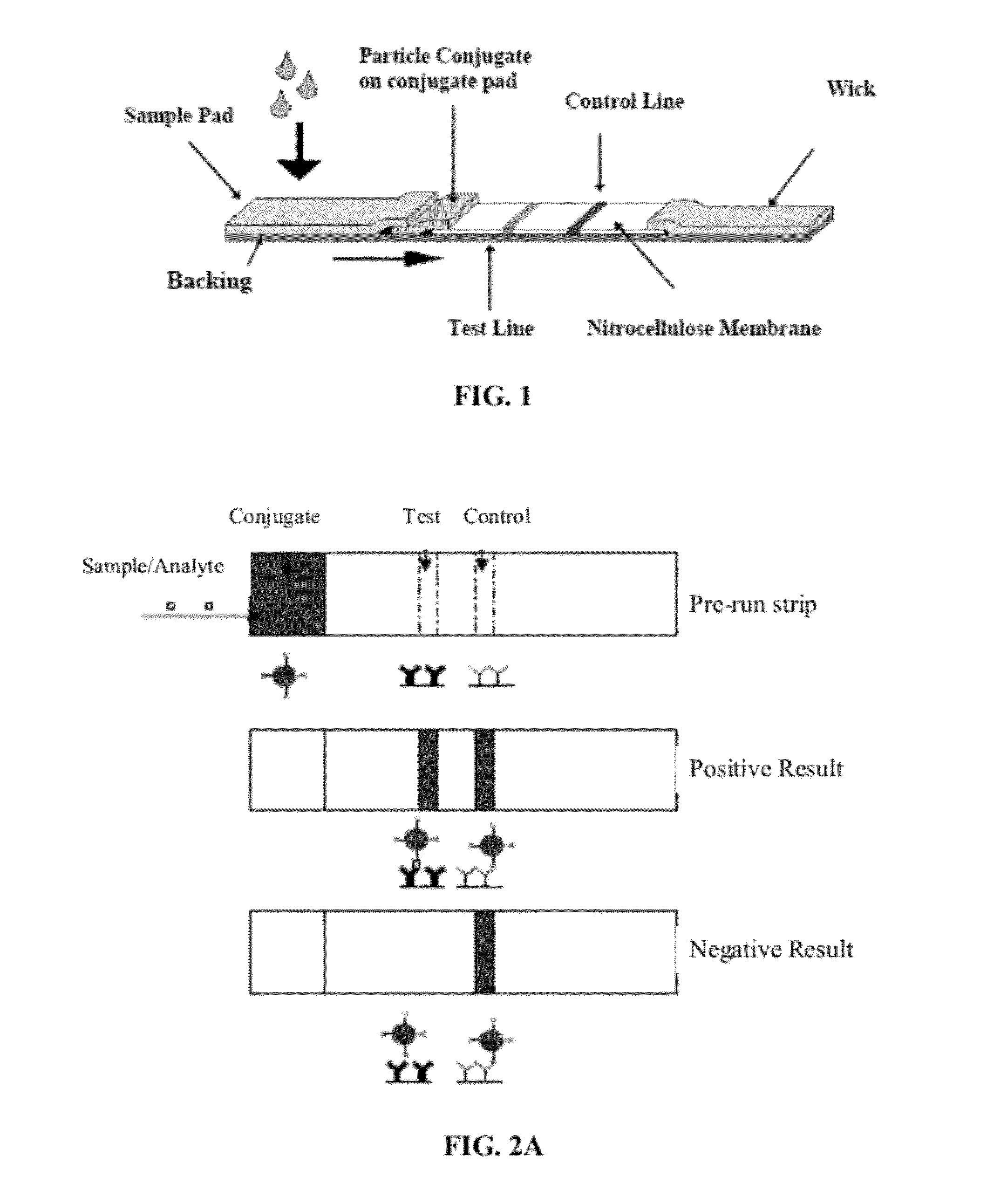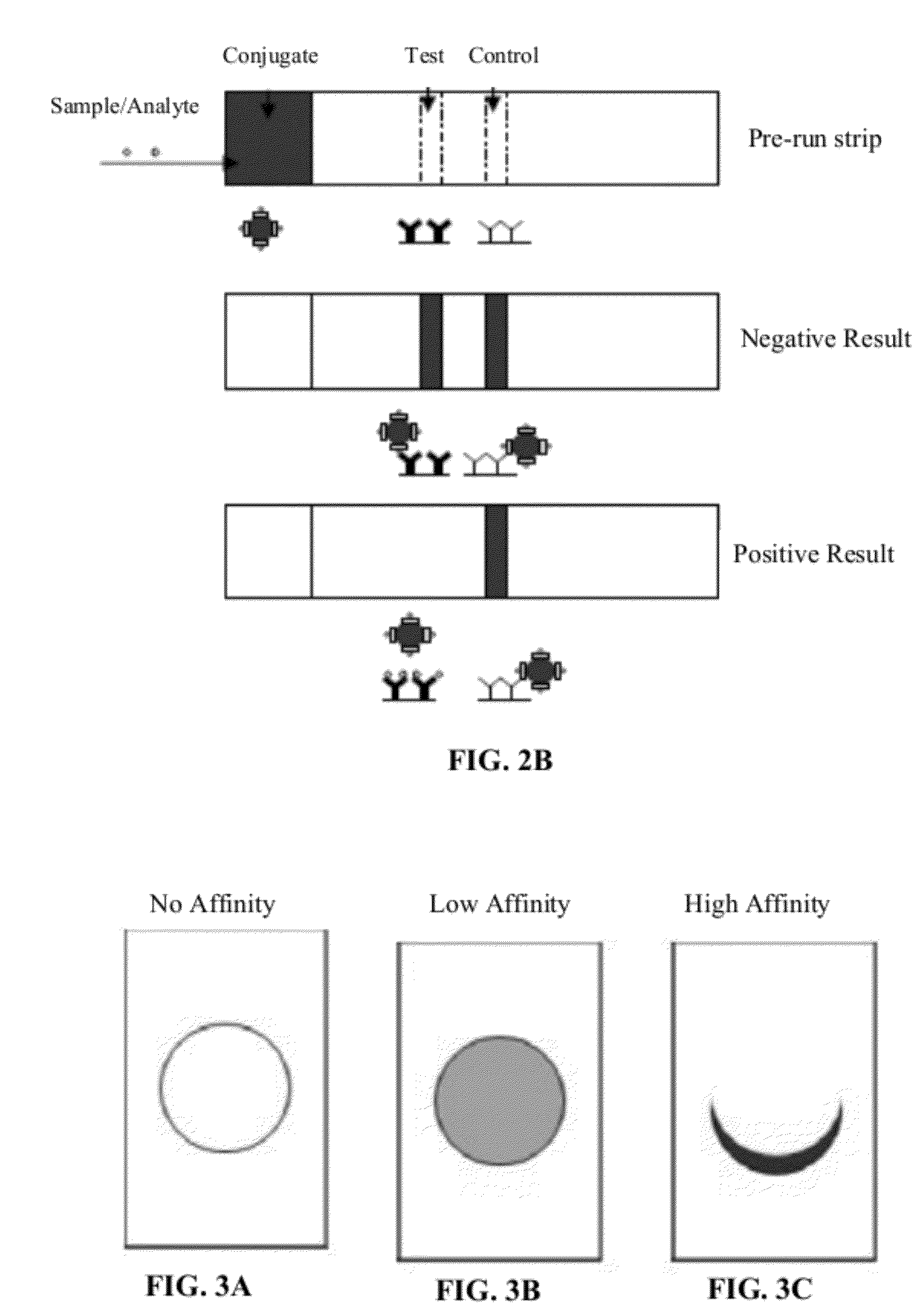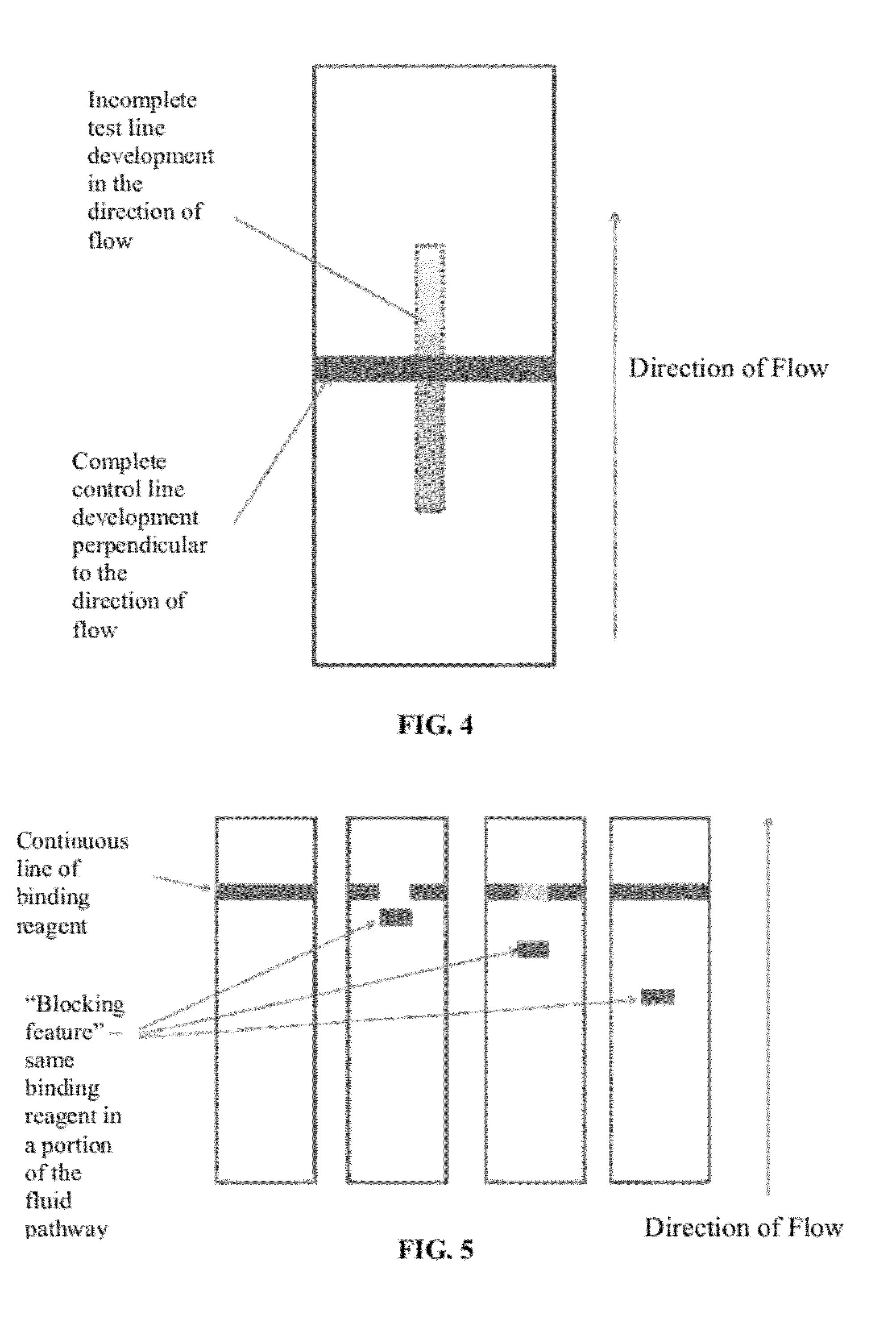Lateral flow assays using two dimensional features
a technology of lateral flow and features, applied in the field of new materials, can solve the problems of performance limitations, poor reproducibility, low sensitivity of traditional design lateral flow assays,
- Summary
- Abstract
- Description
- Claims
- Application Information
AI Technical Summary
Problems solved by technology
Method used
Image
Examples
examples of potential embodiments
[0172]In all of the described embodiments, the signal reagents used to generate the signal in the test would include visible, paramagnetic, optically excited particles or molecules. Optically excited would include fluorescence, luminescence, up converting phosphors) and also add enzymes for visual, fluorescent and electrochemical signaling. Other types of signal generation could be envisaged.
1. Alpha Numeric Symbol on a Lateral Flow Strip
[0173]1.1. Exemplary Application: Pregnancy test with a + and − indicating positive or negative. The particular application is non-limiting and is for illustration only. This example illustrates the method for generating a true + and − on a lateral flow strip.
[0174]In most pregnancy tests, two antibodies are used to bind to the hCG molecule to create a positive signal. Anti hCG alpha can be striped on the test line, and anti hCG beta is conjugated to the label used to generate the signal. These are often monoclonal antibodies. The control line on th...
example 1
[0320]This experiment was conducted to generate a data set to demonstrate aspects of the “pixel” concept for signal development in lateral flow assays. Nitrocellulose membranes (CN 95, Sartorius) were dotted with various patterns and spot sizes as shown in FIGS. 10-16 using a Scienion aspirate-and-dispense piezoelectric-valve system. Biotin—BSA at a concentration of 0.25 mg / ml (DCN) was used as the capture reagent on the membrane. A streptavidin-gold conjugate (40 nm gold, OD10, DCN) was used as the signal reagent. Strips were developed by flowing the streptavidin-gold conjugate laterally along the nitrocellulose membrane in half strip format. The programmed symbols are shown in the A part of FIGS. 10-16 and the symbols obtained from the actual tests are shown in the B part of FIGS. 10-16.
example 2
[0321]This experiment was conducted to illustrate that signal clarity can be improved by removing background binding using a variety of membrane blocking buffers and running diluents and titration of the gold conjugate concentration. The various test strip configurations and test conditions are shown the in the following Table 1 and 2.
TABLE 2Test Strip ConfigurationsA700 pL 35 × 35 200 ccB10 spots 7 nLC700 pL 35 × 35 200 ccD15 spots 101.5 nLE700 pL 35 × 35 200 ccF5 spots 3.5 nLG700 pL Double X 17 × 17H15 spotsI700 pL Double X 17 × 17J10 spotsK700 pL DoubleX 17 × 17L5 spotsM700 pL Plus Sign Zig ZagN20 spotsO700 pL Plus Sign 17 × 17P20 spotsQ700 pL Plus Sign 35 × 35R20 spotsS700 pL DoubleX 17 × 1720 spot
TABLE 3Test ConditionsA100 uL PBS(+) 25 uLConjugate 6 mm Strip,10 min runtimeB100 uL PBS(+) 10 uLConjugate 6 mm Strip,10 min runtimeC100 uL 1XPBS w / 0.1%Tween-20, 25 uLConjugate, 10 min runtimeD100 uL 1XPBS w / 0.1%Tween-20 10 uL Conjugate10 min runtimeE100 uL 1XPBS w / 0.2%Tween-20, 10 uL ...
PUM
| Property | Measurement | Unit |
|---|---|---|
| diameter | aaaaa | aaaaa |
| diameter | aaaaa | aaaaa |
| diameter | aaaaa | aaaaa |
Abstract
Description
Claims
Application Information
 Login to View More
Login to View More - R&D
- Intellectual Property
- Life Sciences
- Materials
- Tech Scout
- Unparalleled Data Quality
- Higher Quality Content
- 60% Fewer Hallucinations
Browse by: Latest US Patents, China's latest patents, Technical Efficacy Thesaurus, Application Domain, Technology Topic, Popular Technical Reports.
© 2025 PatSnap. All rights reserved.Legal|Privacy policy|Modern Slavery Act Transparency Statement|Sitemap|About US| Contact US: help@patsnap.com



